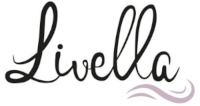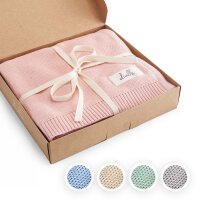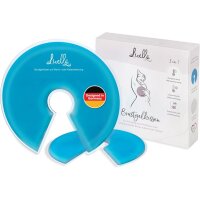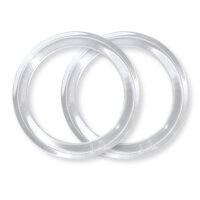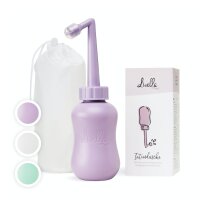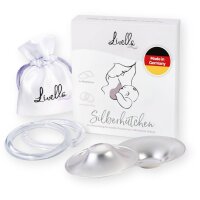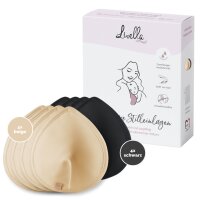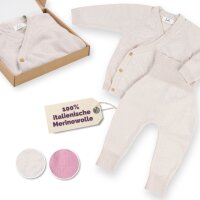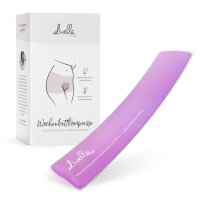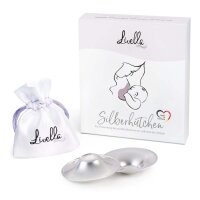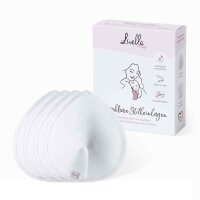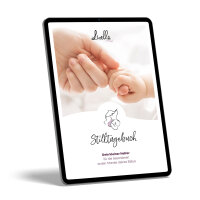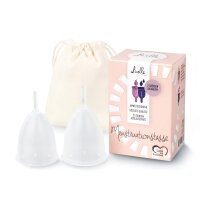There are many different breastfeeding positions to choose from, and finding the right one that is comfortable for both mother and baby is not an easy task. Especially in the early days, breastfeeding mums usually have to try out different nursing positions before finding their personal favourite. Not to forget that not all breastfeeding positions are suitable for the first few days.
But in order to give different breastfeeding holds a try, you first have to know what positions there are and how to do them properly. We have compiled a list of the most common breastfeeding positions along with some helpful breastfeeding tips to avoid different problems that can result from incorrect positioning.
Table of Contents
What are the different positions for breastfeeding?
What is the best breastfeeding position?
Which breastfeeding positions for newborns?
Breastfeeding positions: Tips to help you succeed
Breastfeeding positions: Common problems and how to avoid them

What are the different positions for breastfeeding?
The number of breastfeeding positions varies depending on which publication you consult, but there are a couple of positions that are very common and feature in pretty much every article that lists different nursing positions. Here is an overview of the most common approaches to holding your baby while breastfeeding.
Football hold
The football hold (sometimes also referred to as rugby hold or clutch position) is a breastfeeding position where your baby is positioned under your arm—similar to holding a football, hence the name.
How it works:
Sit down in a comfortable position and make sure to put enough cushions and pillows around you to support your body from all sides. Then use a nursing pillow on which you position your baby—his or feet are pointed backwards towards the backrest of your chair. Now put your arm over your baby to support his or her back while turning your front towards him or her.
The football breastfeeding position is ideal for:
- Mothers who have had a Caesarean birth
- Breastfeeding twins
- Women who suffer from engorged breasts or sore nipples
- Mums with a very strong let-down reflex
- Women with flat or inverted nipples
- Babies who need a lot of support when breastfeeding
Side-lying position
Lying on your side while breastfeeding is a comfortable position for both you and your baby. Especially at night, the side-lying position trumps all others.
How it works:Just as the name suggests, you lie down on your side, your baby lying next to you so that you face each other. Your baby's mouth should be level with your nipple. If you want, you can put a pillow against the back of your baby to make sure he or she doesn’t fall backwards while feeding. Alternatively, you can place your hand on your baby’s lower back or bottom. Once in position, you simply lean your upper body towards your baby to allow him or her to grasp your breast.
The side-lying breastfeeding position is ideal for:
- Breastfeeding after a C-section or a difficult birth
- Breastfeeding at night
- Mothers who want to bond more with their baby
- Women who need more rest during breastfeeding
- Mothers who suffer from back pain
Cradle hold
The cradle hold is pretty much what you might call the classic among the different breastfeeding positions, since it’s the position that is most commonly associated with breastfeeding. In fact, most images of breastfeeding mothers show a woman supporting her baby in the cradle hold while the little one is suckling.
How it works:
Sit upright in a comfortable chair or on your bed (use pillows for support). Place your baby in your lap, his or her head resting in the crook of your arm and the rest of your baby’s body supported by your forearm and hand. It’s similar to a position you would take to rock your little one to sleep. If necessary, support your breast with your free hand. You can also use pillows to support your arm and elevate the position of your baby so he or she can latch on properly.
This breastfeeding position is ideal for:
- Breastfeeding in public and on the move
- Mothers who do not like to breastfeed lying down
- Instinctive breastfeeding
- Mothers and babies who want to try a new position after a few weeks of laid-back nursing
Cross-cradle hold
The cross-cradle hold is a modified version of the cradle hold. This position is often recommended for mothers who are only just learning to breastfeed.
How it works:
The cross-cradle hold differs from the classic cradle hold in that the position of your arms is inverted. Instead of your baby's head resting in the crook of your arm, it is supported by the hand of the opposite arm. With the other hand, you carefully guide his or her head towards your breast.
The cross-cradle hold is ideal for:
- Newborns and small, premature babies
- Mothers who are new to breastfeeding
- Mothers with painful nipples or large, heavy breasts
- Babies with a weak suck
Laid-back nursing
Laid-back nursing (also called biological nurturing) is a breastfeeding position that allows your baby to use his or her natural instincts to find your breast and latch on. In terms of positioning, laid-back nursing is situated somewhere between sitting upright and lying down.
How it works:Sit down in a reclined position and make sure your body is well supported with pillows and cushions. Once you are seated comfortably, put your baby on your chest/tummy with his or her cheek positioned in close proximity to your breast. Then you simply wait patiently for your baby to find your breast and latch-on. Lying on his or her tummy, your little one will be able to use hands and feet to find the ideal position for feeding.
The laid-back breastfeeding position is ideal for:
- The first few days and weeks of breastfeeding
- Enabling close skin-to-skin contact
- Activating natural breastfeeding reflexes in both mother and baby
- Breastfeeding newborn babies
- Enjoying the close proximity of your baby
- Relieving sore nipples
Upright breastfeeding
Upright breastfeeding (sometimes also called koala hold) is a breastfeeding position for older babies, since it requires your little one to be able to sit upright—ideally without a lot of support from your side.
How it works:
Sit down in a position that is comfortable for you, your baby sitting upright in your lap, either straddling your thigh or placed on your hip. Your baby’s face is turned towards your breast, his or her mouth being level with your nipple. Your upper body is upright, which is why it’s important that you support your baby from behind. Only when your baby is sitting securely can he or she concentrate fully on breastfeeding.
Upright breastfeeding is ideal for:
- Older babies
- Breastfeeding in public
- Breastfeeding with sore nipples
- Mothers with strong let-down reflex
- Reducing the baby’s reflux

What is the best breastfeeding position?
With so many different positions for breastfeeding to choose from, it sure doesn’t come as a surprise that many new mothers find themselves wondering: What is the best position for breastfeeding?
Well, first things first, there is no such thing as THE best breastfeeding position. Every mother-baby pair is different, and just because a certain position works well for some mothers and their offspring, it doesn’t have to be the same for everyone else. In the end, it all comes down to personal preference, since there are many different factors that influence the decision to favour one breastfeeding hold over another, such as birth experience, state of health, and more.
Every breastfeeding mum therefore has to decide for herself which breastfeeding position works best for her and her baby. Usually, the way to get there is to try out various different breastfeeding holds. You should, however, keep in mind that different breastfeeding positions are suitable for different breastfeeding situations, meaning that they all have very specific advantages that can make them the best choice for a particular situation.
For instance, breastfeeding while lying down allows for valuable bonding time while sleeping next to your baby. The cradle hold, on the other hand, is very useful when you’re out and about and need to breastfeed in public. In the end, it all depends on how, when and where you want to feed your child.
Which breastfeeding positions for newborns?
Finding the right breastfeeding hold is crucial for getting breastfeeding off to a good start. As explained earlier, some positions are more suitable for older babies and toddlers. But what is the easiest breastfeeding position for a newborn?
Possible breastfeeding holds your can try out with your newborn include:
- Laid-back nursing
- Rugby hold
- Cross-cradle hold
Especially in the first few days after birth, many midwives and lactation consultants recommend laid-back nursing, since it allows both you and your baby to follow your natural instincts and share some valuable skin-to-skin contact. What’s more, this is often the position new mothers find themselves in when they first have their newborn put on their chest right after birth.
Breastfeeding positions: Tips to help you succeed
Some breastfeeding positions are more instinctive than others. But even those that take some practice can be mastered with the help of a midwife. Regardless of which position you choose for breastfeeding your baby, there are a few breastfeeding tips that can help you succeed.
- Support your breast: There are different breast support techniques that can help you achieve good latch, for example the C-hold or the U-hold. The aim is to support the weight of your breast so that your baby can feed more easily without having too much breast tissue covering his or her face.
- Check for correct positioning and attachment: It’s not enough to do the breastfeeding position correctly; the baby also has to latch on correctly. This means that the baby's mouth is wide open so that it can grasp not only the nipple but also a large part of the areola. Take your time: Breastfeeding is best done in a state of calmness and relaxation. Make sure not to rush things and allow enough time for the two of you to get comfortable.
- Comfort is key: Breastfeeding can take a while, especially if your little one is famished and in for a long feed. A comfortable position will prevent you from getting tense and restless after a while. You can also use additional pillows and cushions to be even more comfortable.
- Support your baby: No matter which breastfeeding position you choose, your baby must always be in a position where he or she is well supported. Only then can he or she fully concentrate on feeding from the breast effectively. However, always make sure that your baby can move his or her head freely.
- Position your baby correctly: Correct positioning is the key to successful breastfeeding, which is why you should always verify your baby’s position—regardless of which breastfeeding position you choose. His or her mouth should be level with your nipple, and his or her body and spine should be straight (i. e. head, shoulders and hips in a straight line). Also, remember to always bring your baby to your breast and not the other way round. Otherwise, you risk twisting your body into an uncomfortable position, which may result in back and/or neck pain after a while.
- Relax your neck and shoulders: Neck and back pain are common breastfeeding struggles. In many cases, this is due to the fact that the mother underestimates the importance of finding a comfortable position. To prevent your muscles from becoming tense, make sure to support your baby’s weight with additional pillows—instead of supporting it purely with the strength of your arms.
Breastfeeding positions: Common problems and how to avoid them
No matter which breastfeeding position you choose, it must be done correctly in order to prevent any problems that could turn breastfeeding into an unpleasant experience. Problems that may result from incorrect breastfeeding holds include:
- Sore nipples: If your baby is not positioned properly (e. g. he or she isn’t close enough to your body), this usually leads to a stronger pull on the nipple which then becomes sore and painful. To avoid this, check that your baby's mouth is level with the nipple and that he or she doesn’t have to stretch to reach it. If your nipple is already irritated, silver nursing cups can help.
- Back pain: Back pain is a common problem among breastfeeding mums and often results from breastfeeding holds that are not carried out properly. The best prevention for back pain from breastfeeding is to change breastfeeding positions frequently. Using pillows for additional support and making sure you really sit upright is equally important.
- Stiff neck: A stiff neck when breastfeeding is often the result of the mother pulling up her shoulders while feeding. Not using enough pillows to support the head when breastfeeding in the side-lying position can also lead to neck tension. Relaxation and the use of pillows are the best prevention here.
Individuelle Stillposition finden
Die Stillpositionen, die wir zu Beginn des Artikels vorgestellt haben, sind natürlich bei Weitem nicht die einzigen. Daneben gibt es noch zahlreiche weitere Haltungen, die Mama und Kind für die Stillmahlzeit einnehmen können. In manchen Situationen (z. B. bei einem Milchstau) kann beispielsweise das Stillen im Vierfüßlerstand für die Mama angenehmer sein, da das Kind die Brust außer im Bereich rund um die Areola hier überhaupt nicht berührt.
Es lohnt sich, verschiedene Positionen auszuprobieren und zu schauen, was unter welchen Umständen am besten funktioniert. Vielleicht bekommen du und dein Baby dadurch auch Anregungen, um basierend auf eurer individuellen Situation eure ganz eigene Stillposition zu finden.
Für bestimmte Probleme beim Stillen wie etwa einem schlechten Saugschluss gibt es außerdem spezielle Techniken wie den DanCer-Griff. Hierbei unterstützt du mit deiner Hand sowohl die Unterseite deiner Brust als auch den Kiefer deines Babys.

Getting professional support for finding the right breastfeeding position
If you are unsure about how best to approach a certain breastfeeding position or need feedback on whether you are holding your baby correctly, you can always get a professional to help you. Midwives and lactation consultants provide professional breastfeeding support.
If you don’t have a midwife or lactation consultant at hand, you can turn towards one of the many institutions that specialise in supporting breastfeeding mums, such as the La Leche League GB, Lactation Consultants of Great Britain or the Association of Breastfeeding Mothers (ABM).
Sources used
- Breastfeeding Positions | Feeding Your Baby | Start for Life (www.nhs.uk)
- Common breastfeeding positions | UNICEF Parenting
- Positioning - La Leche League International (llli.org)
- Positioning & Attachment - La Leche League GB
- Your Guide to Breastfeeding (uncfsu.edu)
- Essential Guide to Breastfeeding on the Isle of Wight.pdf (iow.nhs.uk)
- Positioning and Latching - La Leche League USA (lllusa.org)
- Upright Breastfeeding Positions - Reduce Gas and Reflux (breastfeeding-problems.com)
- The 6 best breastfeeding positions (medicalnewstoday.com)
- Breastfeeding positions: which are best for you? | Baby & toddler, Feeding articles & support | NCT
- Breastfeeding: positioning and attachment - NHS (www.nhs.uk)
